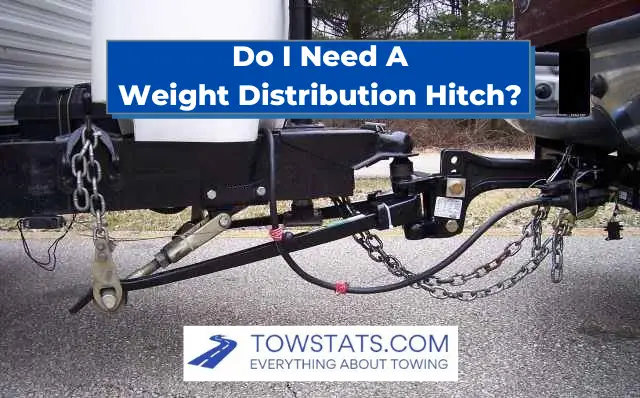The heavier trailers you tow, the more factors there are to consider. Many of our readers ask us: do I need a weight distribution hitch?
You only need a weight distribution hitch if you are towing something that weighs 5,000 pounds or more or if you are towing something that weighs more than one half of your vehicle’s weight.
Each vehicle has it’s own limitations on towing capacities and which weights will require a distribution hitch to be used.
There’s a bit more to this answer which we’ll fully explain in today’s guide.
Read on to learn more and find out if you need a weight distribution hitch.
What Is A Weight Distribution Hitch?
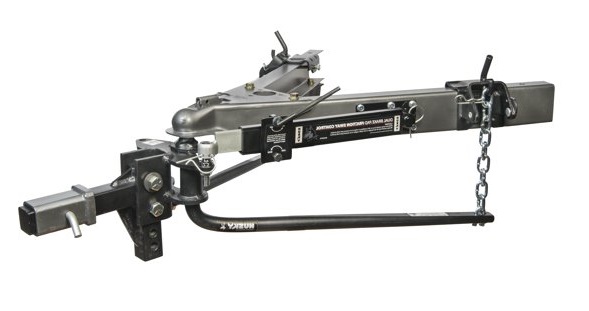
Weight distribution hitches are a class of hitches that help offset the tongue weight of the trailer for a smoother ride.
They can also be considered hitch accessories, but these two terms are used interchangeably.
These hitches mount to a trailer using a trailer ball just like a regular trailer ball mount.
How Does A Weight Distribution Hitch Work?
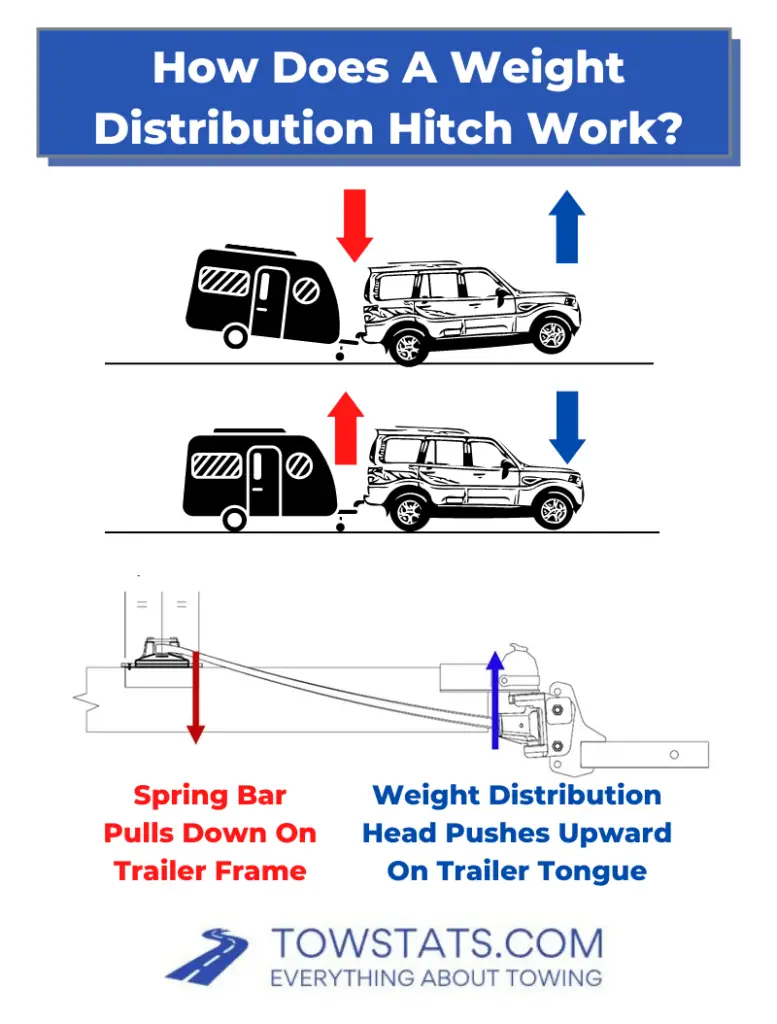
A weight distribution hitch works by distributing the tongue weight evenly to the trailer and tow vehicle axles.
It does this by using spring bars and tension to “push up” on the trailer and vehicle hitch at the mounting point to bring the trailer and vehicle parallel with each other and prevent trailer sag.
The Benefits Of Using A Weight Distribution Hitch
There are several reasons to use a weight distribution hitch:
- Controlled ride
- Level trailer
- Better braking power
- Less wear and stress on vehicle components
- Increased tow vehicle control
- Increased trailer control
- Increased trailer towing capacity
Do I Need A Weight Distribution Hitch?
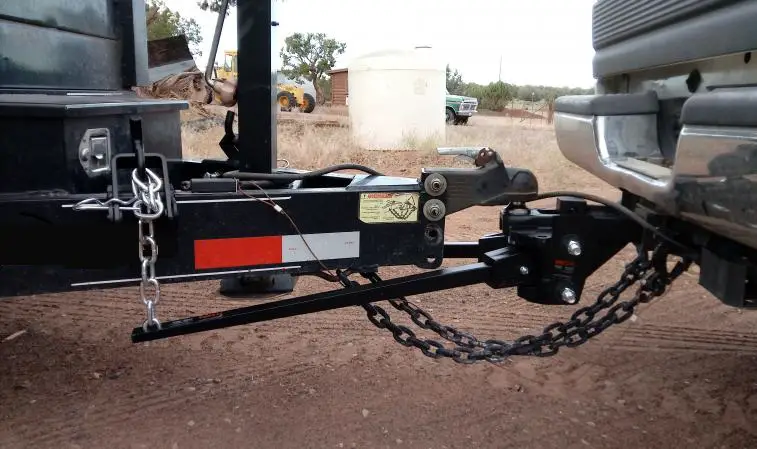
There are a few factors that go into determining whether or not a distribution hitch is needed for your towing setup.
These are:
The weight of your trailer: if the weight of your trailer (GTW) is more than half the weight of your vehicle (GVWR), it’s best to use a weight distribution hitch.
If your trailer is over 5,000 lbs: you’ll need a distribution hitch for trailers over 5,000 lbs in most cases.
Your trailer sags: If the rear of your tow vehicle sags when the trailer is hooked up, it’s time to step up to a WD hitch.
The hitch class you have: If you have a Class 3, 4, or 5 hitch, you can consider using a weight distribution system.
Read more on how to tell what class hitch you have.
The kind of tow vehicle you’re using: if you’re towing a heavy trailer with a lightweight vehicle, then you should consider using one of these hitches.
The ride quality of your tow: if you’re towing a tall trailer, camper, or cargo trailer and are experiencing trailer sway, a distribution hitch will help control it.
The ball mount rating: if you’re towing something heavier than the regular ball mount rating allows, switch to a weight distribution hitch.
You have trouble steering or stopping: adding a WD hitch will help relieve these issues and give you a safer ride.
When Should You Not Use A Weight Distribution Hitch?
Although there are many benefits to these types of hitches, there are a plenty of situations where you don’t need a weight distribution hitch:
- If your tow vehicle or trailer aren’t sagging.
- If your trailer weighs less than 5,000 lbs or less than half of your tow vehicle’s weight.
- If you don’t experience trailer sway at highway speeds.
- If you have a Class 1 or Class 2 hitch installed on your vehicle. (Read more on trailer hitch classes).
- If you have a vehicle with a unitized body and frame (check your vehicle owner’s manual first).
- If your receiver hitch opening size is under 2 inches.
- If you have a trailer with surge brakes (only certain WD hitches are compatible with surge brakes).
- If you have a trailer with a pole tongue (you may need a pole tongue adapter to use a WD hitch with it).
Parts Of A Weight Distribution Hitch
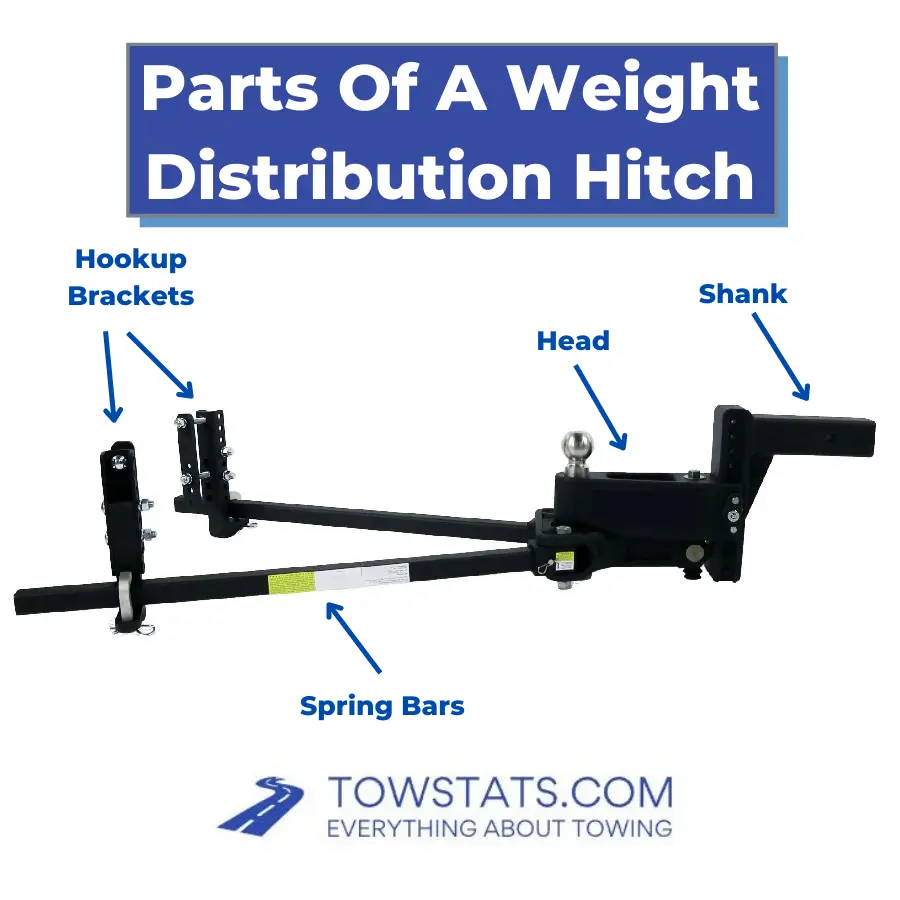
There are 5 parts of a weight distribution hitch:
Hitch: A Class 3, 4, or 5 trailer receiver hitch that’s also rated for use with weight distribution systems
Shank: Provides an adjustable mount that can be moved down or up to match the tow vehicle’s height.
Head: Connects the spring bars to the shank.
Spring Bars: these are the tension points that do the weight distribution and help level your trailer.
Hookup Brackets: The brackets allow for mounting the string bars to the trailer frame.
Round Bar Vs Trunnion Bar Weight Distribution Hitches
There are two main types of weight distribution hitches: round bar and trunnion bar.
Neither one is particularly better than the other, it’s just what matches your needs.
Round Bar WD Hitches
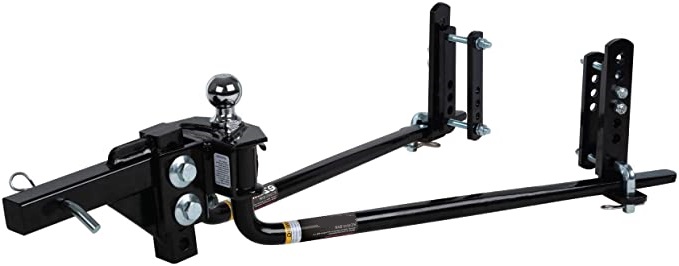
These are called “round bar” hitches because the spring bars are round in shape, and come out of the bottom of the hitch head and curve like a cane as they head back to the trailer frame.
These have less ground clearance than trunnion bar hitches.
Trunnion Bar WD Hitches
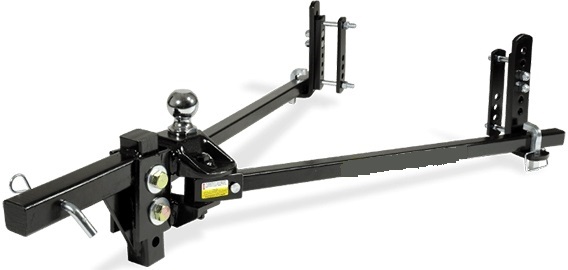
Trunnion bar hitches utilize square spring bars and come directly out of the hitch head and run along the same height as the frame of the trailer.
Trunnion bar WD hitches can usually handle a little more weight versus round bar WD hitches, and have a little more ground clearance too.
How Much Do Weight Distribution Hitches Cost?
Weight distribution hitches cost between $300 and $500 for most models.
Having a weight distribution installed professionally can run anywhere between $200 to $800.
Can I Tow More Weight With A Weight Distribution Hitch?
Yes and no. WD hitches don’t allow your vehicle to tow more than it’s maximum tow capacity, but they do allow you to tow at higher capacities versus using just the hitch without a weight distribution system installed.
Most Class 3, 4, and 5 hitches will have two separate weight ratings: one without a WD hitch, usually referred to as the “weight carrying ball mount” max gross trailer weight and max tongue weight rating, and another value referred to as the “weight distributing” max gross trailer weight and max tongue weight rating.
If you want to tow at the higher of these two values, then you need to use a weight distribution hitch.

